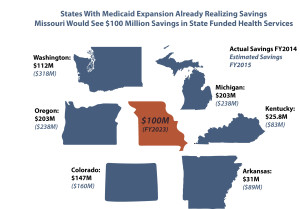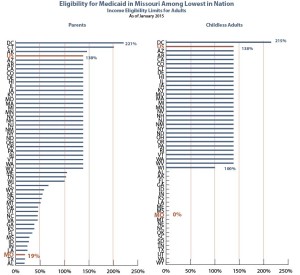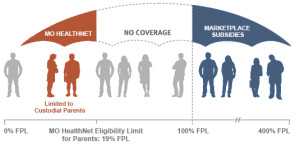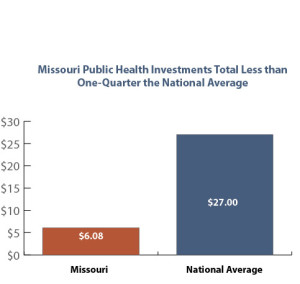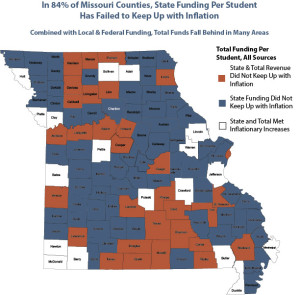MO Tax Cuts?
Tomorrow a Senate Committee will hear a proposal to further cut Missouri income taxes, but cuts won’t create the good jobs Missouri needs. And they will undermine our future by making it harder for the state to invest in what really does build a stronger economy.
SB 574, to be heard by the Senate Ways & Means Committee tomorrow morning, would increase and accelerate the tax cuts passed in 2014. The 2014 cuts are expected to cost $620 million each year, and according to the fiscal note, SB 574 will cost an additional $528 million more each year when fully implemented.
That means the state would have $1 billion less to invest in the education and infrastructure vital to creating real, sustainable economic growth. This $1 billion blow would come as the state is already underfunding the K-12 education formula by $500 million a year, and our state is still struggling to recover from both the effects of the Great Recession and previous tax cuts.
There are two main things to consider about additional tax cuts:
Tax Cuts Don’t Work
Oklahoma and Kansas have led the way on tax cuts. And they show us Missouri should head in a different direction.
- Oklahoma is battling a budget deficit of more than $1 billion in next year’s budget. Similarly, Kansas’ tax cuts have left the state struggling to pay for schools, colleges, and universities, threatening the state’s long-term economic vitality. And in the short-term, the state’s job and income growth lags behind the rest of the nation and business growth has been unimpressive.
- Claims that Kansas’ “pass-through” tax cuts have created small businesses are misleading at best. This type of tax cut just isn’t effective at job creation; rather it just creates skewed incentives for business. Net growth in registered businesses in Kansas was low. The so-called increase was the result of many businesses just dissolving and recreating themselves to take advantage of a new tax status.
To Really Create Jobs and Economic Growth, Invest in the Future
Missouri can promote real, long-term economic growth by investing in quality schools to educate a skilled workforce; access to affordable health care to ensure Missourians are healthy for work and school; efficient transportation that enables companies to bring their products to market and people to commute to work; and safe, stable communities.
Deep income tax cuts mean the state will have to raise other taxes or cut these important things, because there simply won’t be enough revenue to make the investments we need. As a result, cuts in income taxes often result in increases to sales and property taxes, which hit middle- and low-income Missourians the hardest.


